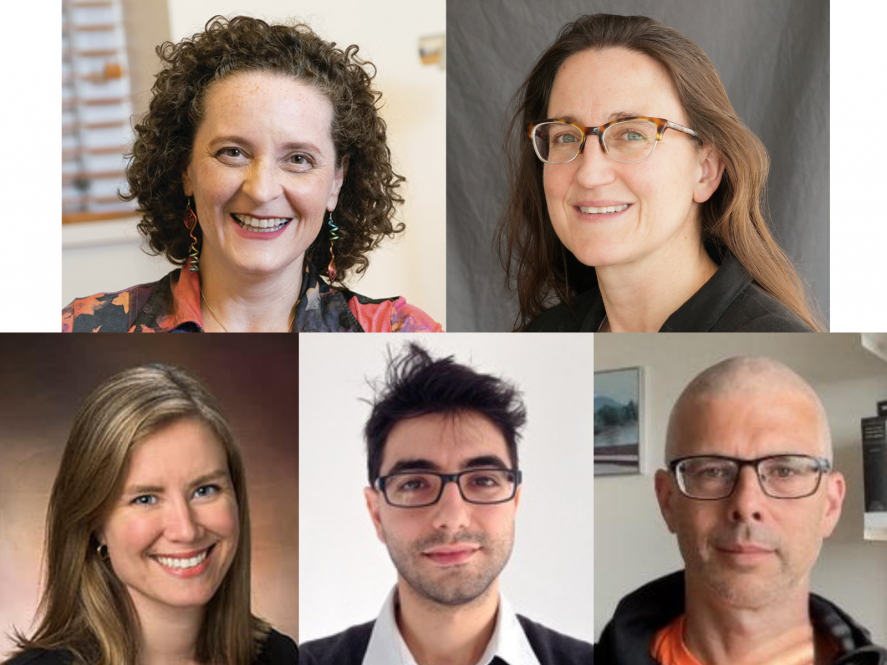UConn psychology professor Inge-Marie Eigsti is leading a team of researchers hailing from Boston, Philadelphia, and Aarhus, Denmark, that aims to unravel the complexities of language abilities in individuals with autism spectrum disorder, with support from an R01 grant from the National Institutes of Health.
Titled “Ready to CONNECT: Conversation and Language in Autistic Teens,” this project addresses a scientific conundrum within autism research.
Many children and individuals with autism spectrum disorder demonstrate age-appropriate skills on standardized clinical assessments of language. This is part of the reason the Diagnostic and Statistical Manual of Mental Disorders (DSM-5), the most comprehensive resource available for mental health researchers, removed language deficits from the diagnostic criteria for autism. Yet, in working with autistic individuals, Eigsti and her colleagues have observed discrepancies in language comprehension and conversational ability that suggest non–age-appropriate abilities and negatively affect their social, educational, and occupational outcomes.
“We developed this grant to look at the possibility that standardized language assessments are kind of missing something,” says Eigsti. “They’re not capturing something about language abilities in autism. And so we’ve come up with this metric of conversational success.”
According to Eigsti, the idea for the Connect Project emerged organically from the long-standing friendship among its investigators. In 2003, Eigsti and collaborators Ruth Grossman, Julia Parish-Morris, Ethan Weed, and Riccardo Fusaroli met up for lunch in Chicago, having traveled from around the world to attend the International Autism Conference. Hours of chatting over clinical and shared psycholinguistic expertise turned into a decades-long tradition of a group dinner every year at the conference, and those many conversations formed the basis of the Connect Project.
The team’s main approach is to conduct conversations between teenagers with and without autism. The conversations, designed to be both unstructured and focused on social communication tasks, aim to measure conversational success – a metric that combines qualitative and quantitative measures to better capture individuals’ real-life abilities in engaging conversations, beyond traditional standardized clinical assessments.
According to Eigsti, standardized clinical assessments may not reflect challenges in language processing in autistic individuals because such assessments build uniquely on their strengths.
“People can score in the average range even when they might struggle in real life,” says Eigsti.
“The examiner asks a question and you respond to that question, or the examiner tells you to say something and you give a response. And then the next item is completely novel, so it doesn’t build on that prior activity.”
However, in everyday conversation, tracking shared information over the course of a conversation and remembering what was said before can be particularly challenging for autistic individuals. This aspect, which is not addressed in standardized clinical assessments, is crucial for understanding real-world challenges faced by individuals with autism.
The team aims to use the data collected to create a computational model that will identify subgroups of individuals based on their conversation interactions. One subgroup might struggle with holding information in memory, whereas a different subgroup might have difficulty deciphering nuances in tone such as sarcasm or humor. This approach aims to inform more individualized treatment goals by recognizing the diverse strengths and challenges among individuals with autism.
The project will also address the hypothesis that autistic individuals communicate more efficiently when paired with someone sharing their neurotype. Additionally, the team will be making comparisons between online and in-person interactions to determine if there are any autism– specific differences in how video conference interactions unfold.
The Connect Project is set to launch in March after a period of pilot sessions and fine-tuning of details. With a goal to collect data from 500 teenagers engaged in 250 pairs, Eigsti welcomes anyone from the autism community interested in participating to contact her for more details.
In February, a community advisory board, comprising autistic teens, adults, parents, and clinicians, provided feedback on the planned activities. This inclusive approach ensured that the project remains sensitive to the needs and perspectives of the autism community, says Eigsti.



